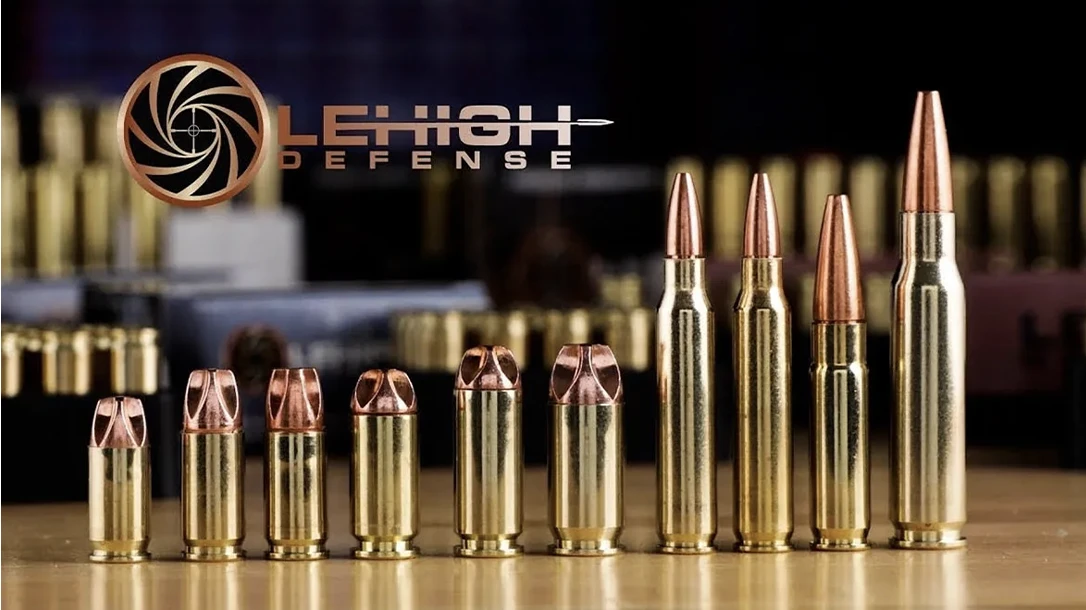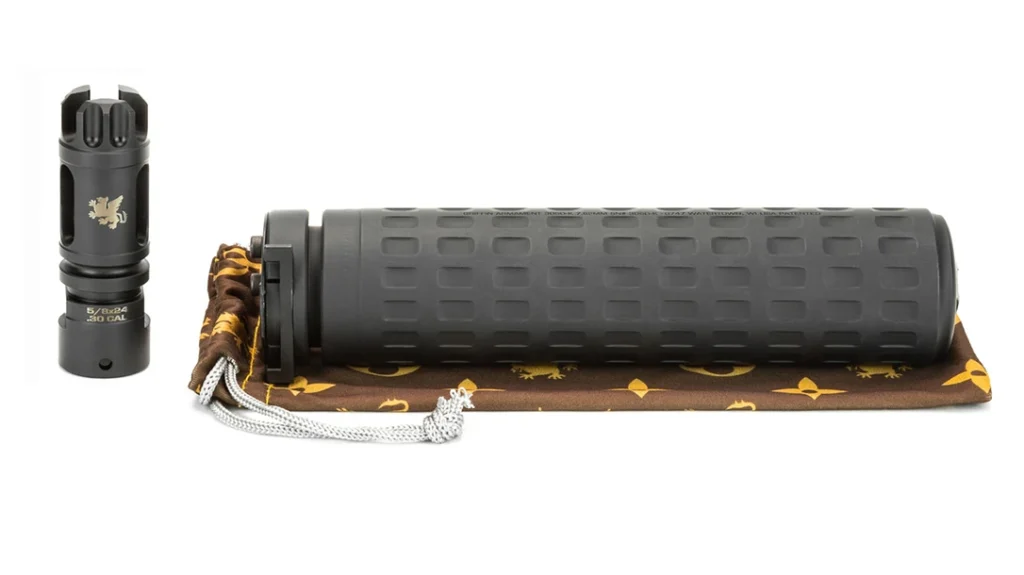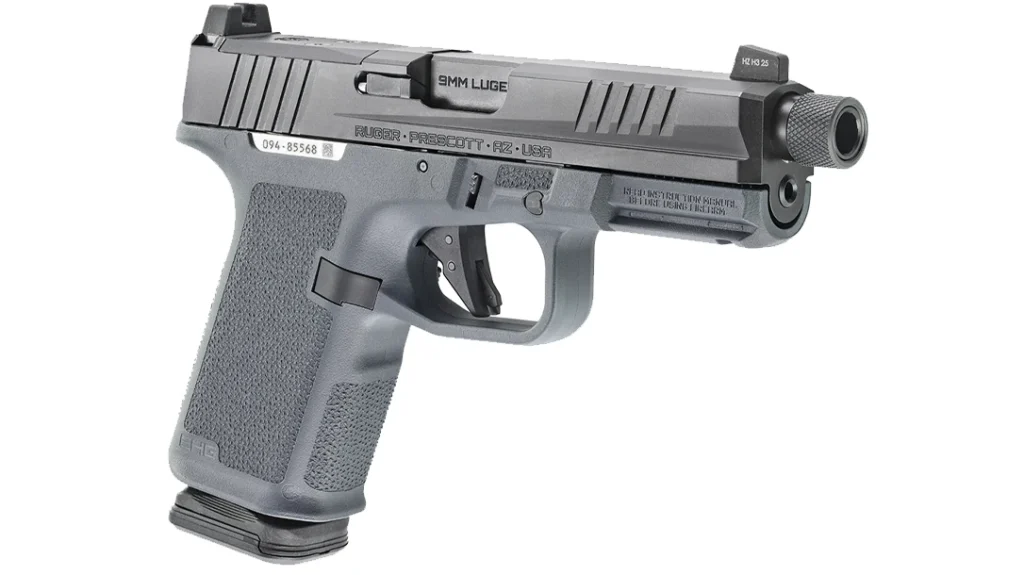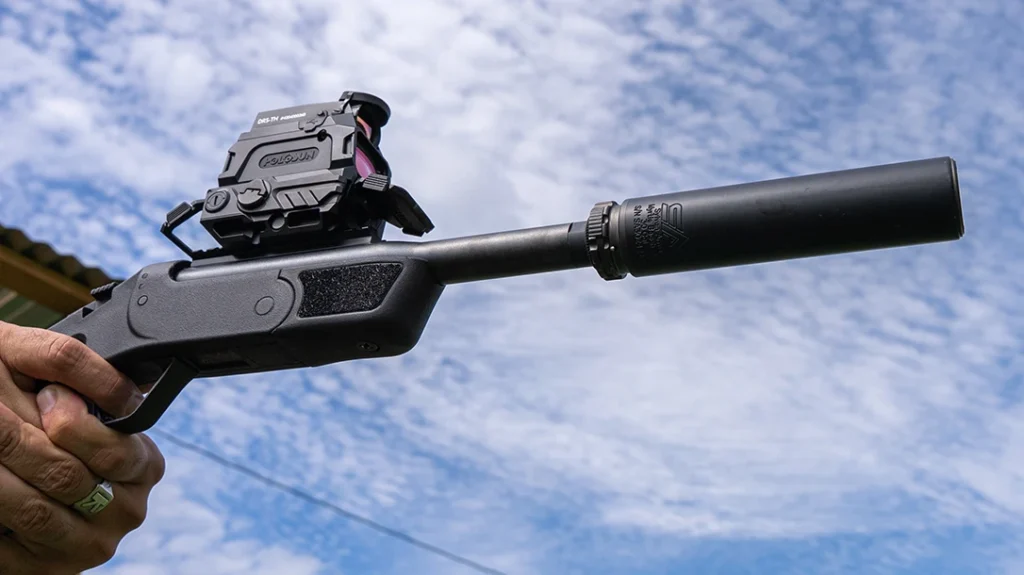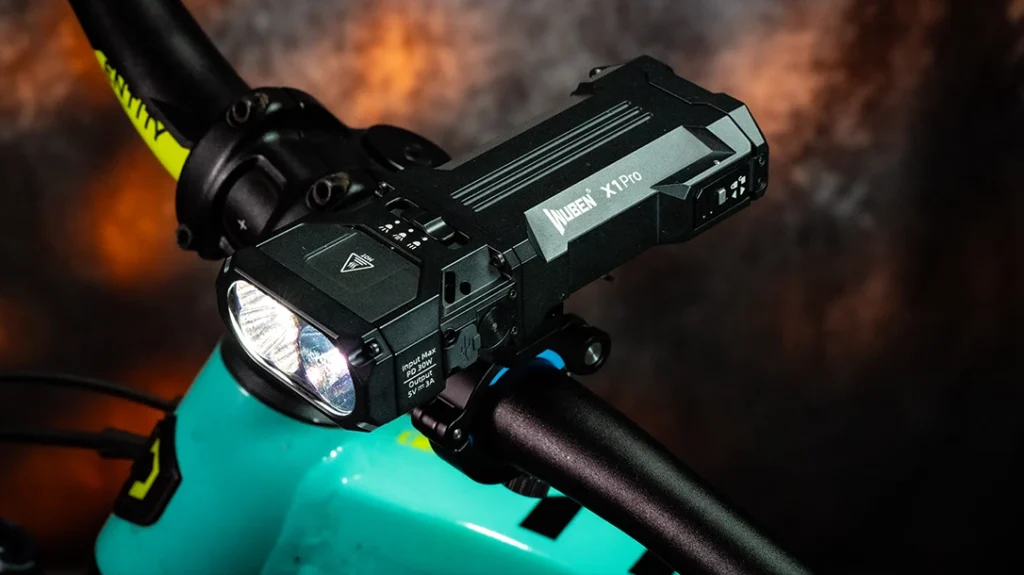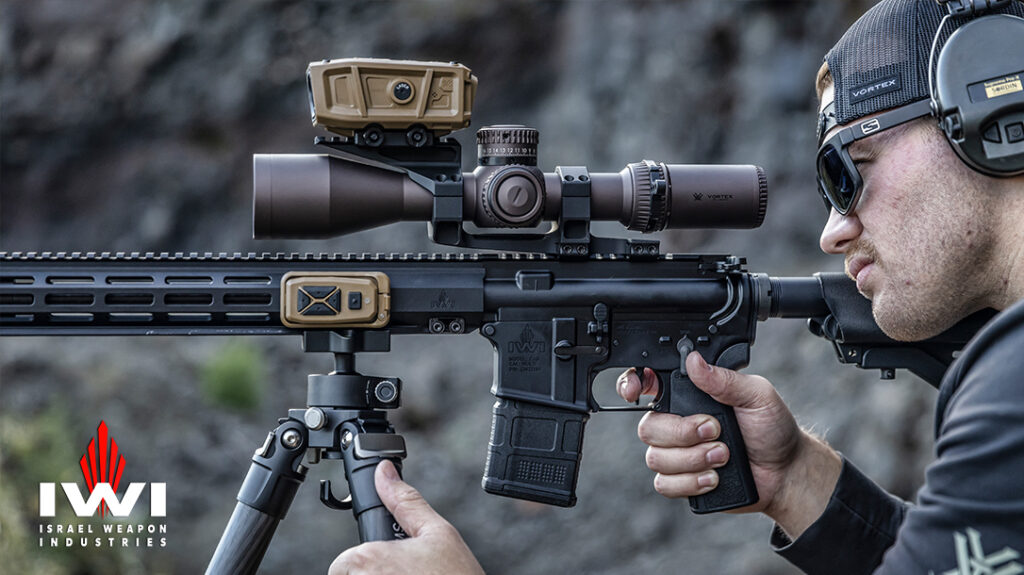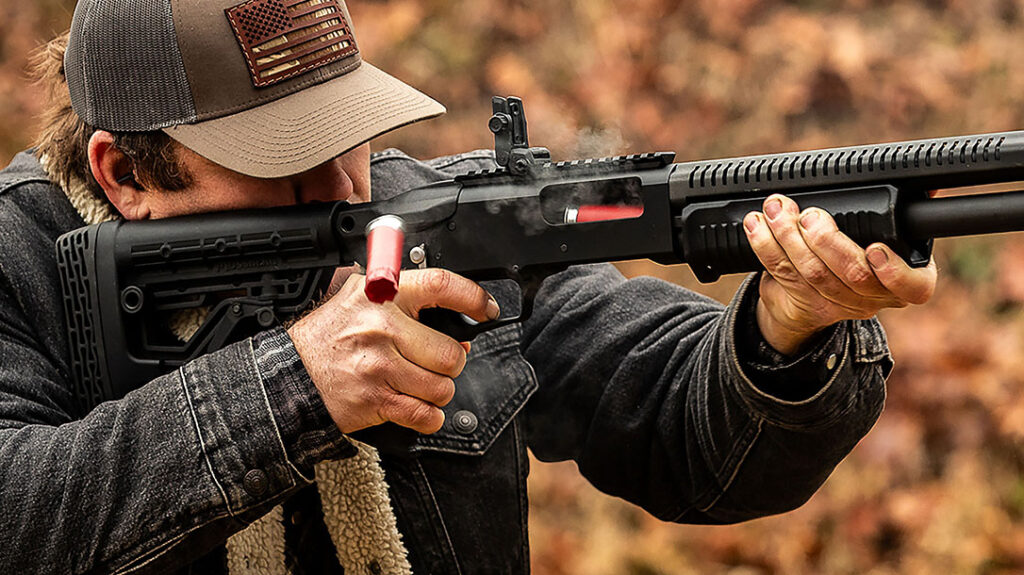Serious hunters and target shooters are among the most dedicated handloaders because they appreciate the importance of tailoring their handloads to their firearms.
When Lehigh Defense began radically advancing the capabilities of solid copper bullets, the most open minded of these top tier shooter/handloaders took notice. Among those guys was one Bill Wilson, a legendary gunsmith and firearms manufacturer based out of Arkansas.
Maybe you’ve heard of him and his company?
Advertisement — Continue Reading Below
Wilson took so much interest he bought the Lehigh, moved it to Texas (into a brand-new building) and equipped it with enough modern CNC Swiss screw machine lathes to make 390,000 projectiles a month.
Lehigh’s Ballistic Monolithics

Advances in technology usually take a little while to catch on. Solid copper monolithics in ammunition are no different.
Advertisement — Continue Reading Below
These types of projectiles can cost a bit more since copper is about 30% more expensive than lead. But when you’re shooting to win a match, cleanly kill a trophy animal or save your life, the extra expense might as well be a rounding error. What matters is reliable and consistent performance.
Based on its extensive research and patents, Lehigh Defense has developed monolithic bullets with extraordinary terminal ballistics. These bullets’ properties allow them to perform more predictably and consistently than traditional jacketed lead core bullets. Bullet-to-bullet uniformity is another factor in these projectiles’ equation.
Each bullet is made by a single CNC Swiss screw machine, from start to finish. That bullet is manufactured from one homogenous bar of copper alloy in 20-30 seconds.
Advertisement — Continue Reading Below
On the other hand, traditional jacketed bullets begin with at least two components. Then both of those components, the jacket and lead core, must undergo several operations. Some of these steps may possibly introduce tiny variations in tolerance into the finished bullet.
Lehigh Defense has extensive loading data for all their bullets online. One of the company’s original founders, Mike Cyrus, is an e-mail or phone call away to answer questions too.
Here are nine bullet types Lehigh Defense currently makes and what they can do for you. Some are specifically for rifles, some for pistols, and some do double-duty.
Advertisement — Continue Reading Below
Xtreme Defense & Xtreme Penetrator Monolithic Bullets
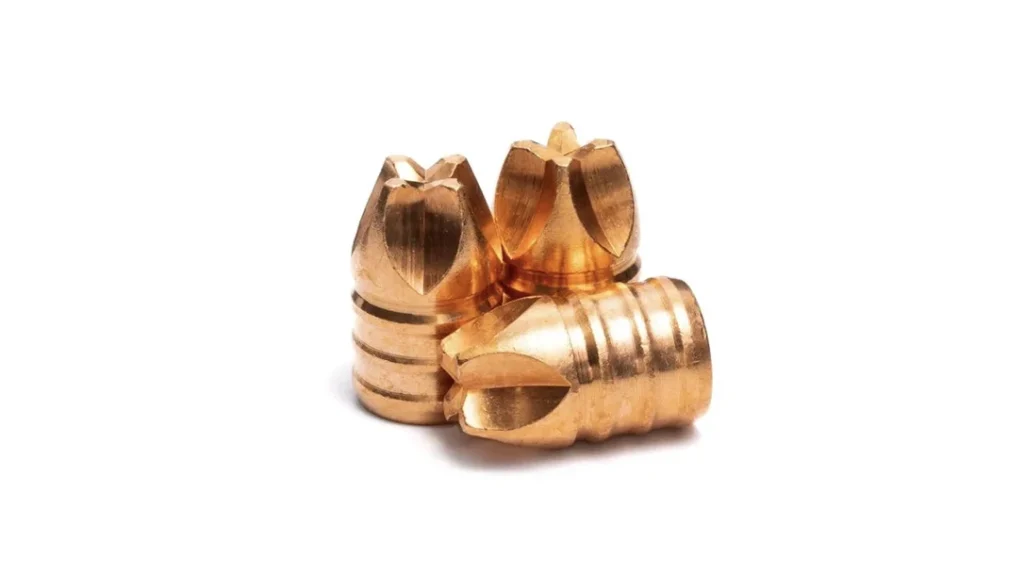
Xtreme Defense self-defense pistol bullets are the most widely known of the Lehigh Defense. Other ammo companies including Black Hills, Buffalo Bore, Underwood, Gorilla load their products with these projectiles.
These Xtreme distinctive Philips screwdriver-like bullets cause serious tissue disruption equal or greater than that caused by JHP projectiles. However, Xtremes perform with more consistency because they can penetrate dry barriers (heavy clothing, wood, drywall, sheet metal and glass) while still maintaining their terminal performance in tissue.
Advertisement — Continue Reading Below
The Xtreme Defense and Xtreme Penetrator are true “barrier blind” bullets as long as they maintain sufficient velocity after penetrating said barrier. It’s not that they are armor-piercing, Xtreme bullets just efficiently penetrate common light barriers. Lehigh calls these bullets Fluid Transfer Monolithic (FTM) because they rely on fluid dynamics rather than simple mechanical expansion to disrupt tissue.

Without getting too deeply into the science, their main feature is their nose flutes. These flutes redirect hydraulic energy outward at a greater velocity than the forward velocity of the projectile itself.
Advertisement — Continue Reading Below
Fluid Transfer Monolithic Explained
Think of it this way: a snowplow on a highway broadsides you with the wave of airborne ice and water it shoots sideways thanks to its blade. Granted, it is more complex than that. Cavitation and velocity play important roles too. To fully understand how FTM works, you first need to know Bernoulli’s principle as it applies to fluid dynamics.
Non-scientific types will find the visual results in ballistic gel and animal flesh testing quite compelling. The wound cavities, both temporary and permanent, appear bigger than conventional hollow-points and penetration, if sometimes less than standard FBI protocols with some factory loads, is still quite good with less danger of overpenetration and injury to bystanders.
Thanks to their solid-copper design, Xtreme Defense bullets won’t clog up like a conventional hollow-point. This also means they won’t unexpectedly turn into the equivalent of a FMJ ball round and massively over-penetrate targets either.
Advertisement — Continue Reading Below
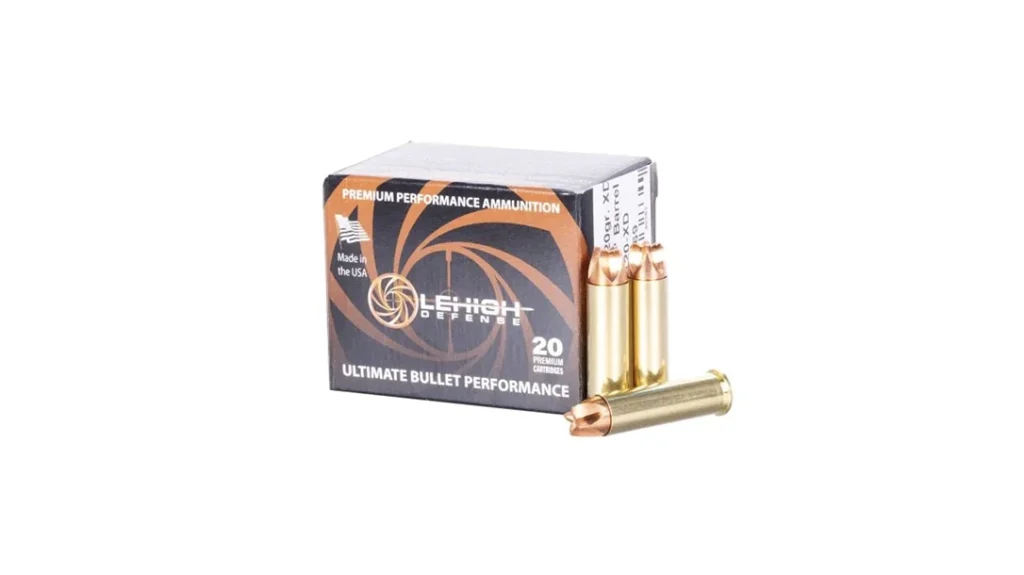
Xtreme Defense bullets, intended for personal defense handguns, have big flutes that meet sharply at the nose to displace the maximum amount of tissue for faster energy transfer. The Xtreme Penetrator bullet is intended for pistols and long guns and offers deep straight-line penetration ideal for sportsmen hunting tough game animals under 100 yards. It has smaller flutes that flatten at the nose and transfers somewhat less destructive energy into the target than the Xtreme Defense bullet. with less deceleration which allows deeper penetration. Bullets for revolvers are designed with concave noses so they can be used safely in the tubular magazines of lever action guns.
Maximum Expansion & Maximum Expansion Tipped Monolithic Bullets
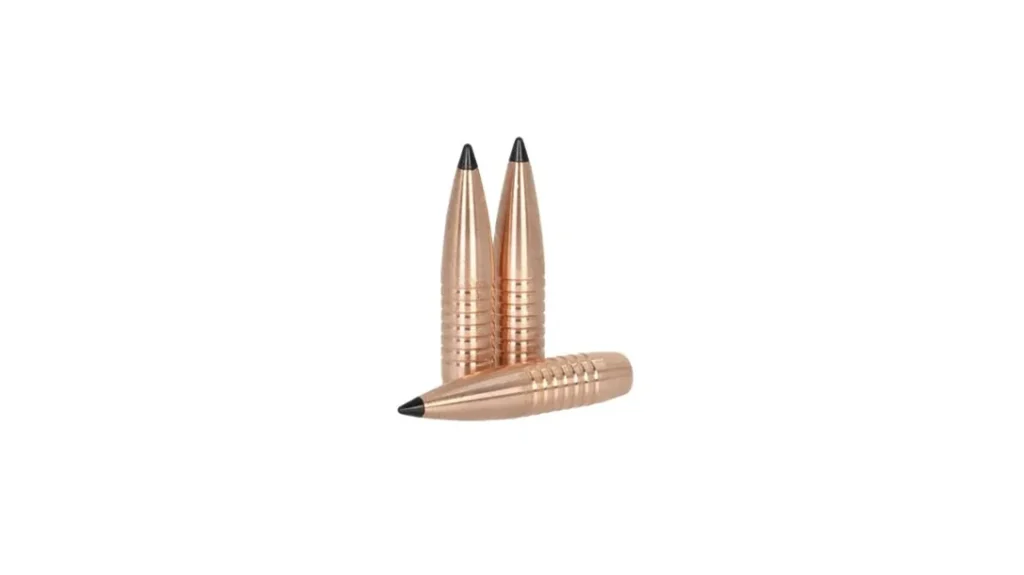
Advertisement — Continue Reading Below
Maximum Expansion bullets are designed to retain near 100 percent of their weight for maximum penetration and deliver high energy transfer. They’re also designed to create the largest wound channel possible.
Upon contact with a fluid-based medium (flesh), hydraulic action causes the pre-cut ogives of these hollow point bullets to open up and petal backward quickly, usually doubling bullet diameter and dumping more energy during the process.
The knife sharp petals on the rotating bullet chop their way through tissue like a boat propeller through the water. Unlike traditional lead core bullets, Maximum Expansion bullets can penetrate dry-medium obstacles/barriers like wood, drywall, bone, or sheet metal without beginning the energy dumping expansion process. Maximum Expansion bullets save that for their flesh and blood target.
Maximum Expansion handgun and subsonic rifle bullets expand with the razor-sharp petals at right angles to the bullet’s axis of rotation for the largest possible diameter wound channel, greater energy transfer, and reduced danger of overpenetration that could hit a bystander. Once expanded they resemble airplane propellers.
Maximum Expansion bullets are available for .223 Remington, 300 Blackout (super and sub-sonic), 300 HAM’R, .308 Winchester, .30-06 Springfield. 9mm Luger, .357 Magnum, .38 Special +P and .45 Colt designed explicitly for the Taurus Judge.
Specifically for rifles, Maximum Expansion Tipped bullets include a pointed plastic tip inside the hollow point to increase the ballistic coefficient of the bullet for greater velocity retention and longer range while improving feeding from the magazine.
Tipped Maximum Expansion bullets are available in: .264/6.5mm 120 grain, .277 125 grain, .284/7mm 135 grain, .308 115 grain (300 HAM’R) and 155 grain, and .358 200 grain
Controlled Fracturing Monolithic Bullets
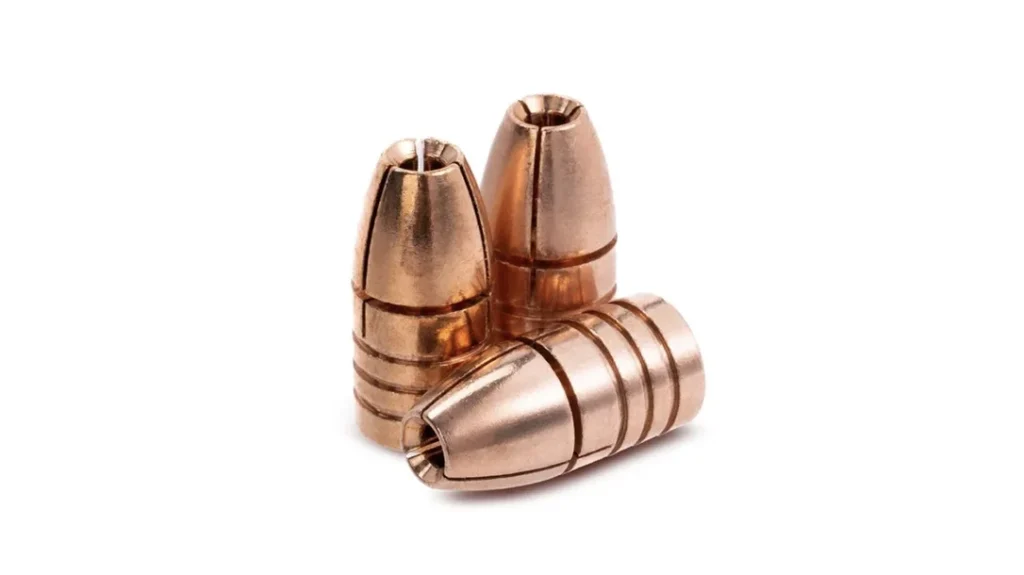
These hydraulically activated bullets look like hollow points but work in a much more devastating and reliable manner. On penetrating a fluid based medium, the nose of the bullet breaks apart along pre-stressed lines sending knife sharp petals outward radially to create additional wound channels while the base of the bullet continues forward along its aimed path.
The controlled fracturing is designed to concentrate the greatest part of the bullet’s energy dump and tissue damage within the first several inches of the target’s body while the base acts as a solid wadcutter. That means this bullet will penetrate deeply, slowly and often completely through the target.
For example, the 9mm 115 grain Controlled Fracturing bullet shed its petals after penetrating 1.5 to 3 inches into ballistic gel. The petals penetrated to 6-7 inches depth overall on their own outward radiating paths. Then the remaining bullet continued on its path penetrating through 17 inches before stopping.
Controlled Fracturing bullets are susceptible to clogging when penetrating some barrier materials. But by design they’re more likely to fracture on impact with tissue even when clogged.
Lehigh’s Controlled Fracturing bullets are currently available in the following caliber diameters: .308, .355, .357, .375, .400, .451, .452, .458 and .500.
Controlled Chaos & Controlled Chaos Tipped Bullets

Controlled Chaos rifle bullets are designed for hunting. They combine high initial energy transfer into the target with deep penetration. Though they look like ordinary hollow points with no external cuts on the ogive, they act like Controlled Fracturing bullets.
Made of a hard copper alloy, the front of the bullet is broken apart by hydraulic pressure upon impact with a fluid based medium sending 5 to 10 sharp edged fragments radiating outward from the base. The fragments cut their own deep wound channels while the base turns into a wadcutter. This wadcutter continues punching through its aimed path and often exits the target which facilitates faster blood loss and easier tracking of the animal.
Like the Controlled Fracturing bullets, the Controlled Chaos bullet doesn’t expand or fragment when it impacts hard barriers like wood, drywall, or sheet metal.
Controlled Chaos bullets are currently available in all major centerfire cartridge diameters.
For longer range performance, there’s a Tipped Controlled Chaos bullet with a pointed plastic plug in the meplat. This improves its aerodynamics and retains velocity better than open-tipped Controlled Chaos bullets.
Tipped Xtreme Chaos Bullets
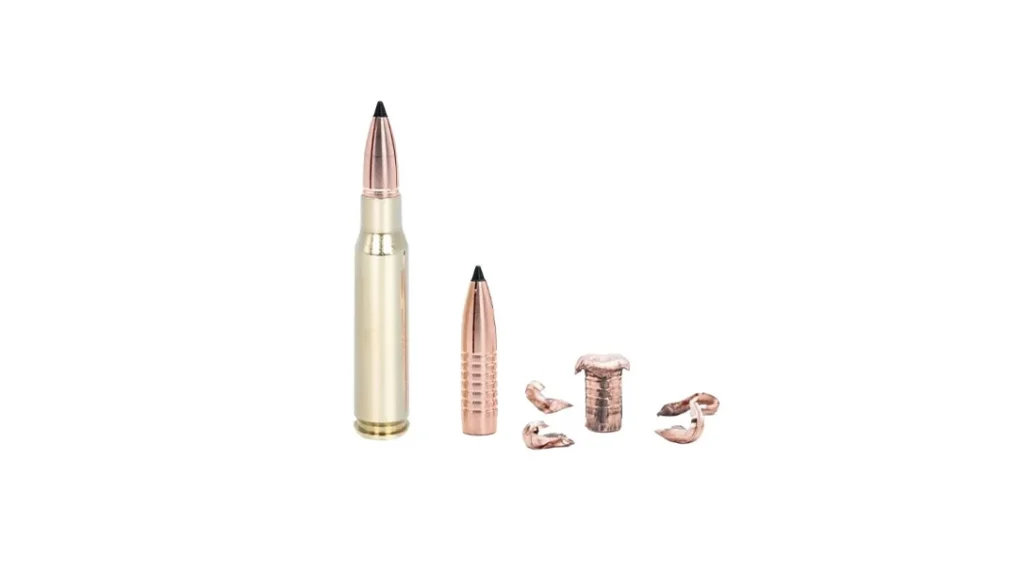
Tipped Xtreme Chaos rifle bullets function similarly to the Tipped Controlled Chaos. However, they’re made with a softer alloy and a nose with four breakaway petals. Like the Tipped Controlled Chaos bullet, these bullets are unaffected by impact with hard obstacles. They behave like FMJ bullets–until they hit “liquid,” which essentially sets them off to fragment.
In the process of tearing away from the bullet base, the petals “bloom.” The outside diameter ends up growing and carves a much larger, more ragged, wound channel. On game, the exit wound can drive increased blood loss. Typically, the base of a .30 caliber bullet will expand to .40 caliber.
Bill Wilson considers these the deadliest hunting bullets on the market due to the combination of a devastating wound channel created by the 4 petals radiating outward and the deep penetration of the expanded base.
Tipped Xtreme Chaos bullets are available in .277/6.8mm 125 grain, .284/7mm 135 grain, .308/7.62mm 115 grain (300 HAM’R) and 155, 165 and 175 grain. The plastic tip serves the same purpose here as it does in Controlled Chaos bullets.
Match Solid Monolithic Bullets

Monolithic rifle bullets offer the competitive marksman the most precision and consistency practically possible. Turning each bullet from a solid bar ensures it is free of inclusions and voids that generate unexpected flyers in traditional cup and core lead bullets. Machined bullets’ axis of symmetry is equal to its axis of geometry, thus ensuring stability in flight. Match solid bullets are available in .264, .308 and .311 diameters.
Wide Flat Nose Monolithic Bullets
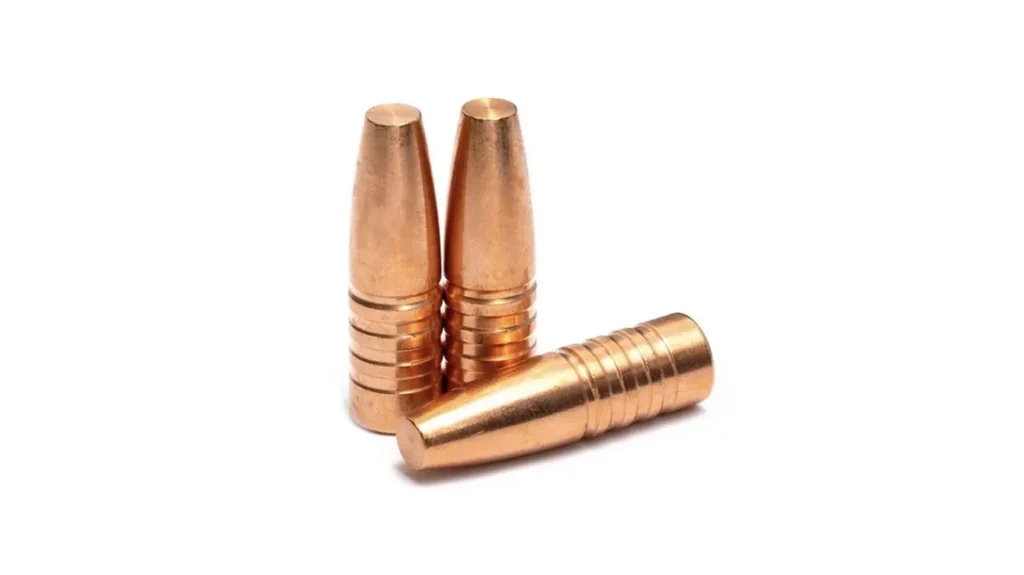
Designed for hunting use in big-bore rifles and handguns where deep, straight, penetration through the bones, muscle and flesh of big and dangerous game animals is the primary requirement.
Lehigh’s take on this classic, non-expanding, solid hunting bullet is designed to resist deflection inside the target so the bullet goes where it is aimed. It is made of a copper alloy with 10 to 20 times more tensile strength than conventional lead solid projectiles that better resists deformation and chipping that cause deflection.
They designed the meplats for punching power and proper feeding with relief bands around the bullet circumference to maximize velocity potential by reducing friction in the barrel
These projectiles are available in virtually every big-bore flatnose bullet caliber.
Xtreme Cavitator Monolithic Bullets

The tip of these bullets resembles a square Robertson screwdriver bit and functions in a manner somewhat like FTM bullets. Cavitators increase tissue displacement along the wound channel. Their unique geometry is both ideal for penetrating barriers that would seriously degrade the performance of conventional lead FMJ and hollow point bullets.
FMJ bullets hold together better but are still prone to penetration problems from velocity loss and deformation when fired through barriers. By contrast, the Extreme Cavitator showed it could efficiently defeat drywall, wood, sheet metal, and even glass barriers and retain enough velocity to penetrate 8 inches of ballistic gelatin! Currently available only in for .30 carbine and .32 caliber handguns.
